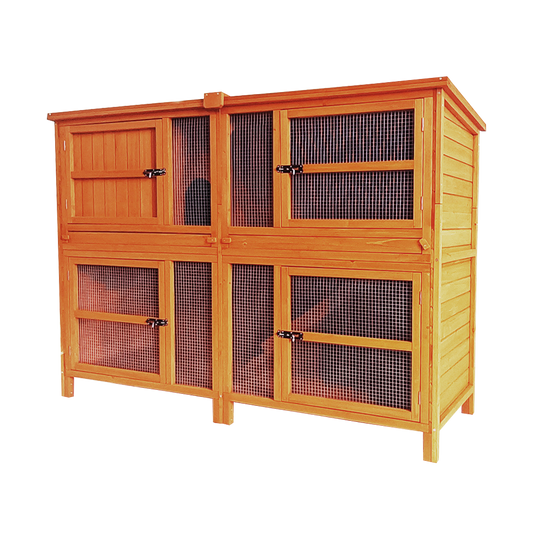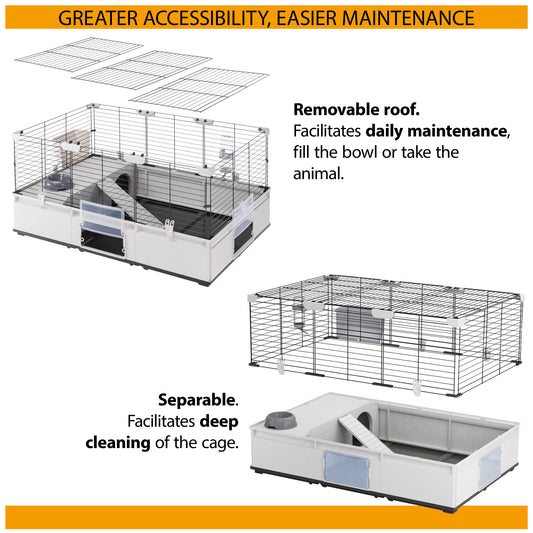Choosing to breed a litter of puppies is a big responsibility and should only be considered if you are certain that you know how to do so responsibly and that the pups will have loving homes to go to. If you do not intend to breed from your dog, welfare organisations recommend neutering your pet to avoid any unplanned pregnancies.
How can you tell if your dog is pregnant?
Initially, you may not notice the early signs of pregnancy as they tend to be just slightly larger and pinker nipples, and a swollen vulva. As the pregnancy progresses the signs will become more obvious with weight gain, sagging of the tummy, increased hunger and low energy.
If you suspect your bitch could be pregnant, you should take her to see your vet who will be able to confirm it and offer you advice and support for the pregnancy. It could be that your dog has a ‘phantom’ or false pregnancy, which is when a dog feels, acts and sometimes even looks pregnant but isn’t. This is caused by hormones that are released after a bitch has a season and is very common among non-neutered bitches.
Special needs
A canine pregnancy takes around nine weeks and during this time an owner will have to care for their bitch in a different way to make sure that she is prepared for giving birth. It is a big commitment to care for a pregnant dog – especially when it comes to giving birth – and you should contact your vet if you have any concerns during the course of the pregnancy.
Diet
Your pregnant dog is likely to be wanting to eat for two – or more! Her appetite is going to increase as she needs more fuel for growing puppies. By the end of her pregnancy, she will be eating two to three times more than normal.
In order for your pregnant dog to get the necessary number of calories she needs, you will need to switch to a food specially designed for pregnant and lactating dogs or a high-quality puppy food, which will be higher in protein and certain vitamins compared to an adult food. As with any change of diet, you should make the switch gradually over a week to avoid stomach upsets.
As the puppies get bigger your dog’s stomach will become quite squashed and there will be less space for food. Ideally you should feed your dog smaller meals regularly throughout the day to allow for this.
Exercise
While it is important for your pregnant dog to keep fit, you will need to be led by her as to when and how much exercise she has. If she seems tired, let her rest – particularly in the later stages of pregnancy. If your dog is getting less physical exercise, you could boost her mental stimulation by giving her puzzle feeders to solve during the day.
Worming
Frequent worming is essential for pregnant dogs to prevent them passing worms on to their puppies. However, not all worming treatments are suitable for use during pregnancy so speak to your vet about what product they would recommend.
Miscarriage
There are several reasons why a pregnant dog might miscarry, including infection, stress, injury or hormonal problems. You may not even notice if the miscarriage is very early on into the pregnancy but if it is later your bitch is likely to experience labour pains, start producing milk and may even give birth to dead puppies. If you suspect your dog is miscarrying, you should contact your vet immediately.
Whelping
As your dog nears the end of her pregnancy, you will need to make sure that you are ready for her to give birth. Your vet will have given you an estimated due date and while dogs are usually pregnant for around 63 days it can range from 57 to 71 days. When it starts to get close to your dog’s due date you should monitor her more closely for signs that she might be going into labour.
Your dog will need somewhere to give birth and the safest place to do this is in a whelping box. You can buy these readymade or you could make your own out of a large, rigid cardboard box. The whelping box will act as a nest for your dog to give birth in and be a safe place for her to have her puppies. Your dog’s whelping box needs to:
- Be warm and comfortable
- Be located in a quiet part of the house
- Be lined with clean, absorbent bedding – old towels work well
- Be big enough for your dog to stretch out in and high enough for puppies not to be able to climb out (but low enough for your dog to step over).
- Have a ledge around the bottom of the inside so there is space for the puppies to slide under. This will prevent them from getting squashed against the walls by their mother.
The first stage of labour is known as the preparation stage and can take anywhere from six to 36 hours. During this time, your dog will be restless, panting, hiding away or ‘nesting’ by digging and circling in the whelping box. She should settle just before she starts giving birth.
The second stage is when your dog will begin to have stronger contractions and will feel the need to strain. The first puppy will often take the longest to be born and there will be a gap between each puppy that can last between five to 90 minutes. It is important to note that if your dog has been straining for 30 minutes without producing a puppy, you should contact your vet immediately.
When the puppies are born, they will each come out inside a thin sac, which your dog will remove so that they can take their first breaths. After each puppy a placenta should follow within around 15 minutes.
Your dog shouldn’t need any assistance from you during the birthing process but it is important to monitor her closely and contact your vet immediately if she appears to be having problems.
Once all the puppies have arrived your dog will be very tired and hungry! She will need time to rest with her puppies so she can start to bond with them and feed them. Give them a bit of space at this time so they are not disturbed. If at any point you are concerned about the health of the puppies or their mother, speak to your vet for advice.
If you enjoyed this article, you may be interested in:









